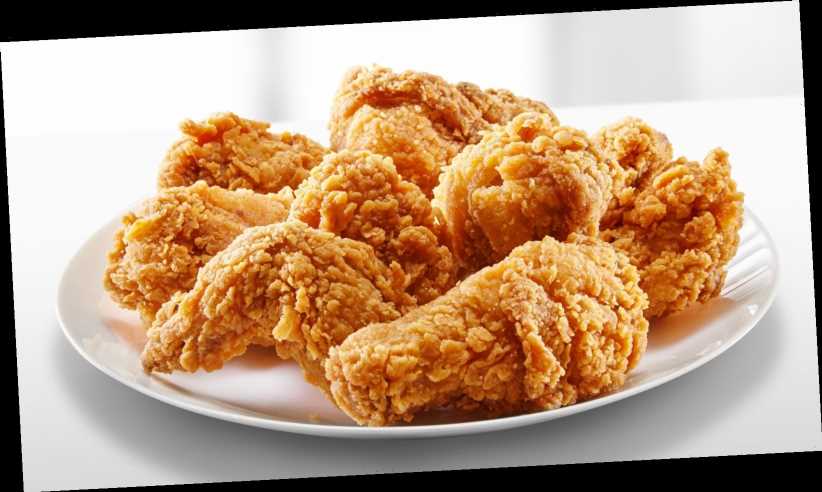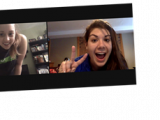
Mistakes Everyone Makes When Cooking Fried Chicken
02/26/2021
Fried chicken is one of those foods that just about everybody loves. Okay, so it’s a nutritionist’s nightmare, what with all the added carbs from the coating and the fat that’s absorbed during frying. Still, there’s a reason why we practically start salivating every time a commercial for Chick-fil-A, Popeyes, or KFC comes on. All fried things are yummy, but fried chicken rules the roost.
Despite its popularity, not too many people are anxious to cook fried chicken at home, and for good reason. It’s actually pretty tricky to pull off correctly, and way too easy to wind up with something paradoxically raw in the middle and burnt to a crisp on the outside. Plus, there’s the fact that deep frying chicken is kind of scary! Okay, not deep-fried-turkey-keep-the-fire-department-on-standby scary, but still not the kind of thing that should be attempted without a really good homeowner’s policy.
Still, want to try your hand at DIY fried chicken? Well, it can be done, as everybody seems to have a Great-Aunt Sally who was a master of the art. Not being possessed of a Ouija board, we couldn’t channel the old gal for cooking advice, so Mashed did the next best thing and spoke with Perdue Farms’ executive chef, Chris Moyer. Luckily he, too, had a number of pointers to offer on the right way to cook fried chicken, as well as some potential perils you should take pains to avoid.
Safety tips for deep frying chicken

Every great meal starts with not burning down the house. Who could possibly disagree with that premise? After all, no one’s fried chicken is literally to die for. Moyer says that the first rule of frying without dying is: “Never leave a fryer unattended.” What’s more, you should fill the fryer with oil while it is cool and the unit is turned off. Only pour up to the fill line, since overfilling might wind up in a hot oil overflow while cooking. When you turn on the fryer, set it for between 325 and 350 degrees. Any less, and your food won’t cook properly. Any more, and you’re risking a kitchen fire.
When the time comes to add the chicken to the hot oil, don’t crowd the basket! Not only will this result in chicken that takes too long to cook and also cooks unevenly, but it could also result in an oil overflow. The hot oil needs to stay in the fryer, and it needs to maintain a temperature that’s not so high that it bursts into flames. According to The Kitchn, vegetable oil can catch fire at 450 degrees, while lard could go up in smoke if it reaches 375 degrees.
Tips to make your deep fried chicken turn out tasty
While safety is obviously the most important part of cooking (or any other activity), it would also be nice — should you go through all the effort of frying your own chicken — to have it turn out edible. First of all, you’ll need to choose the right coating. According to Moyer, raw flour coatings are the ones best suited to deep frying, so battered chicken would work fine. Breading or cracker-coating won’t work so well, as these tend to burn more quickly. If your favorite chicken recipe calls for either type of coating, it might be best adapted to oven or air frying.
You’ll also need to be patient and let the oil heat all the way up before adding the chicken, since lukewarm oil won’t cook it all the way through. Once the oil reaches the proper temperature, lower the basket of chicken slowly and carefully into the oil, then use tongs (steel, not rubber-coated) to make sure it’s not sticking to the bottom. Check the chicken temperature as it cooks and remove the basket from the oil as soon as the chicken reaches 170 degrees inside. Let the basket drain, lightly shaking it to remove any extra oil.
Advice for air-fried and oven-fried chicken
“Frying” your chicken either in the oven or in an air fryer is an easier, safer, and healthier choice, even if the results may not be quite as mouth-wateringly delicious as the ones you’ll get from deep-frying. Moyer says that if you choose to go this route, there are some steps you can take to make sure you achieve the best results. For starters, both air fryers and ovens need to be preheated, and he recommends the same temperature range as for the oil: 325 to 350 degrees. Bread your chicken, using seasoned crumbs or cracker meal, then spritz on a little cooking oil, as Moyer says this will help the breading crisp up.
If you’re cooking your chicken in the oven, arrange the pieces on a wire rack in a pan (air fryers already come equipped with such racks). This will help to allow for good air flow, something else that is necessary if you don’t want the chicken coming out soggy. You should also make sure there’s space between each piece of chicken, even if (in the air fryer) this means having to cook it in batches. Cook the chicken until it’s that same 170 degrees inside (this is the proper temperature for all cooked chicken), then remove it from the oven/air fryer and allow it to sit for a minute to let the breading dry out a bit.
Source: Read Full Article



